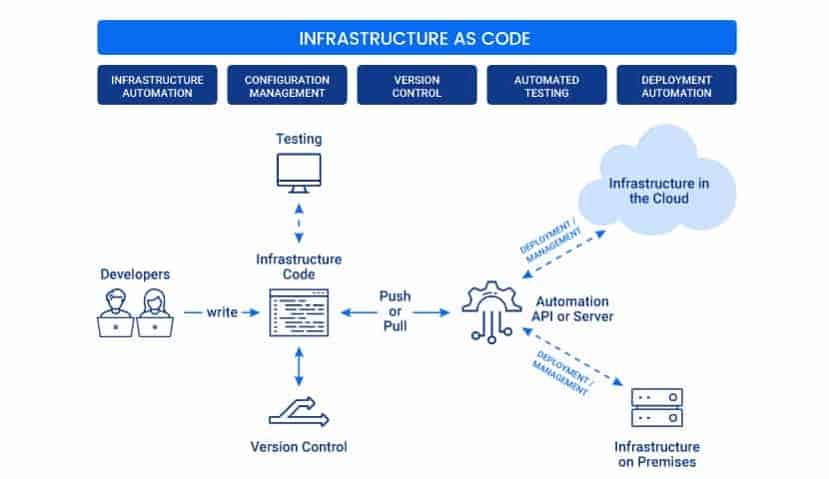
IAC: The Mystifying World of Terraform, Bicep, and CloudFormation
- Published on
- Authors

- Author
- Ram Simran G
- twitter @rgarimella0124
Here’s a draft blog post comparing Terraform, Azure Bicep, and AWS CloudFormation, written in a tone that expresses curiosity and willingness to embrace Infrastructure as Code (IaC) as an SRE, while also conveying some initial confusion about what it is and how it makes life easier:
Title: IAC: The Mystifying World of Terraform, Bicep, and CloudFormation (And How It Supposedly Makes an SRE’s Life Easier)
Alright, I’ll admit it – I’m a little late to the Infrastructure as Code (IAC) party. As an SRE, I’ve been so focused on keeping production systems up and running that I haven’t had much time to dive into these newfangled IaC tools everyone’s been raving about. But lately, the buzz around Terraform, Azure Bicep, and AWS CloudFormation has become deafening, and I can’t help but wonder: What the heck is this all about, and how is it supposed to make my life easier?
Let’s start with the basics: IAC is the concept of managing and provisioning infrastructure (think servers, networks, databases, etc.) through machine-readable definition files, rather than manually configuring resources. The idea is to treat infrastructure like software code, with all the benefits of version control, modular design, and automated deployment.
Now, I get the appeal of automation and consistency, but forgive me for being a bit skeptical. After all, I’ve spent years mastering the art of manual infrastructure provisioning, and it’s served me well (most of the time). But I’m not one to dismiss new technologies out of hand, so let’s explore what these IaC tools are all about.
Below is a comparison table outlining the key differences between Azure Bicep, Terraform, and AWS CloudFormation:
| Feature | Azure Bicep | Terraform | AWS CloudFormation |
|---|---|---|---|
| Language | DSL (Domain Specific Language) | HashiCorp Configuration Language (HCL) | JSON or YAML templates |
| Vendor | Microsoft Azure | HashiCorp (Multi-cloud support) | Amazon Web Services |
| Syntax | More human-readable and concise | Clear and expressive | Verbose, but can be converted to YAML |
| State Management | Azure Resource Manager (ARM) | Terraform State | AWS CloudFormation Stack |
| Multi-cloud Support | No, Azure-specific | Yes | No, AWS-specific |
| Community Support | Growing community | Large community support | Established community |
| Resource Coverage | Focused on Azure services | Wide range of cloud providers | Focused on AWS services |
| Version Control Integration | Git integration | Git integration | Git integration |
| IDE Support | Visual Studio Code | Various IDEs including VS Code | AWS CloudFormation Designer |
| Ease of Learning | Easier learning curve | Moderate learning curve | Moderate learning curve |
| Documentation | Official Azure documentation | Official Terraform documentation | Official AWS documentation |
| Updates | Frequent updates and improvements | Regular updates | Periodic updates |
| Managed Services | Bicep is tailored for Azure managed services | Support for multiple cloud providers | Focuses on AWS managed services |
| Cost Estimation | Built-in cost estimation features | Limited cost estimation capabilities | Limited cost estimation capabilities |
So, how are these IaC tools supposed to make an SRE’s life easier? Well, according to the evangelists, IAC promises to:
- Improve consistency and reliability by codifying infrastructure configurations, reducing the risk of manual errors and drift.
- Enable version control and code reviews for infrastructure changes, just like you would for application code.
- Facilitate collaboration and knowledge-sharing across teams by maintaining a centralized, human-readable source of truth.
- Automate provisioning and deployment processes, saving time and effort compared to manual operations.
- Easily replicate and tear down environments for testing and staging purposes.
I’ll admit, those are some compelling benefits. As an SRE, I’ve lost countless hours to manual configuration mistakes, environment inconsistencies, and ad-hoc provisioning processes. If IAC can truly streamline and standardize these workflows, I’m all ears.
However, I’m also aware of the potential pitfalls and learning curves associated with adopting IaC at scale. Managing complex, interconnected resource configurations in code can quickly become unwieldy, and there’s always the risk of introducing new types of bugs and misconfigurations. Not to mention the need for upskilling and cultural shifts within teams and organizations.
But hey, that’s part of the job as an SRE, right? Embracing new technologies and practices that can improve reliability, scalability, and efficiency? So while I may be a little mystified by the hype around Terraform, Bicep, and CloudFormation at the moment, I’m more than willing to dive in and see what all the fuss is about.
Who knows, maybe in a few months, I’ll be the one preaching the gospel of IaC to my fellow SREs. Or maybe I’ll come back with a newfound appreciation for good ol’ manual provisioning (just kidding, please don’t revoke my SRE card).
Either way, I’m excited to explore this brave new world of Infrastructure as Code and discover how it can make my life easier – or potentially more complicated. But isn’t that the beauty of being an SRE? We thrive on complexity and never stop learning.
So, bring it on, Terraform, Bicep, and CloudFormation. This SRE is ready to be mystified (and hopefully enlightened) by your mystical ways.
Cheers,
Sim